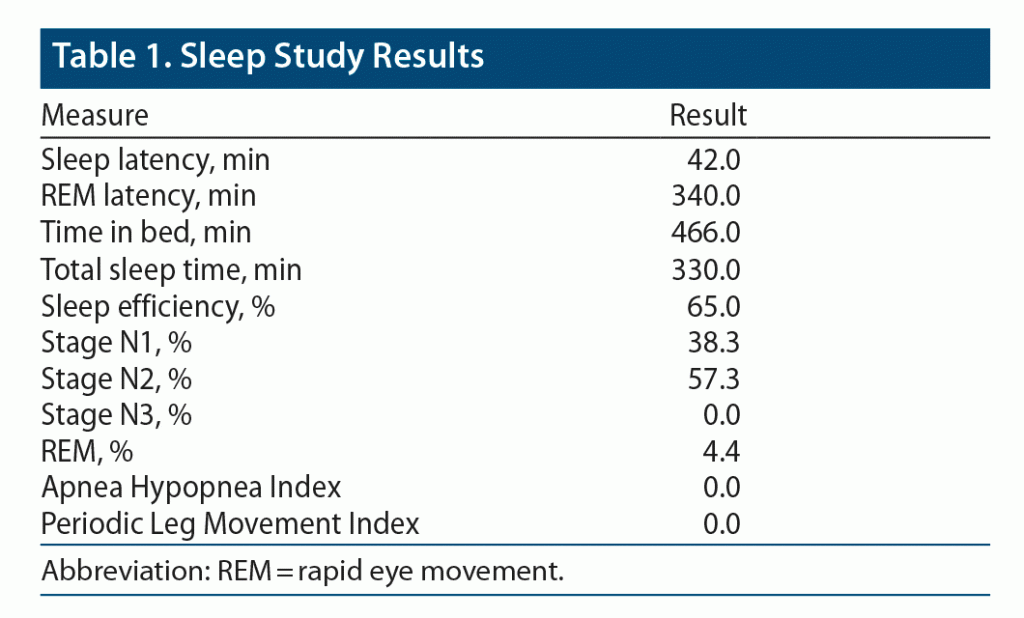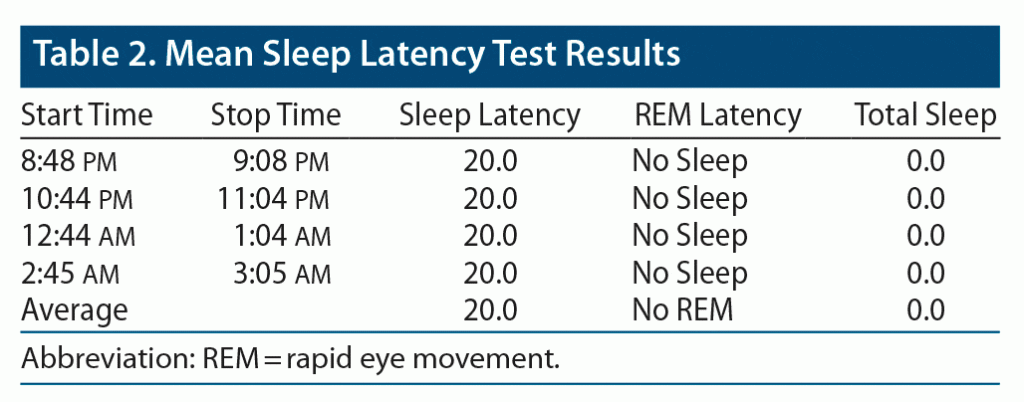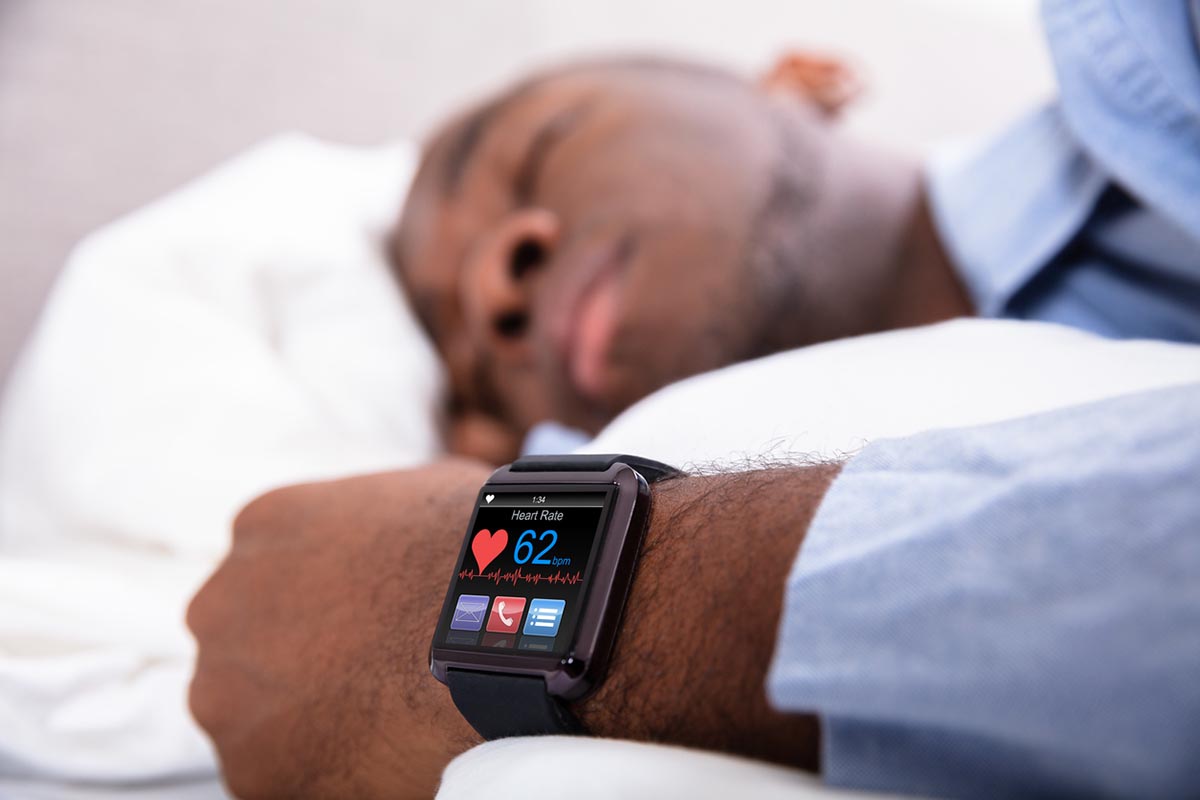
Prim Care Companion CNS Disord 2022;24(2):21cr02928
To cite: Singh J, Kaur H, Yadav S, et al. Suvorexant for primary insomnia in a patient at high risk for hypnotic dependence. Prim Care Companion CNS Disord. 2022;24(2):21cr02928.
To share: https://doi.org/10.4088/PCC.21cr02928
© Copyright 2022 Physicians Postgraduate Press, Inc.
aDepartment of Psychiatry and Behavioral Health, Penn State College of Medicine, Hershey, Pennsylvania
*Corresponding author: Jatinder Singh, MD, Penn State University, 500 University Dr, Hershey, PA 17033 ([email protected]).
Despite primary reports of zolpidem safety and minor abuse and dependency capability,1,2 subsequent reports showed that zolpidem can lead to abuse and dependency.3–8 Also, the elderly and women have decreased clearance capacity to zolpidem, which can possibly predispose patients to zolpidem dependence.6,9
Suvorexant is an orexin 1 and 2 receptor antagonist that is US Food and Drug Administration (FDA) approved for the treatment of primary insomnia. Animal studies10–15 report orexin 1 antagonism to decrease craving and orexin 2 receptor antagonism to improve sleep. Zolpidem is commonly prescribed for the treatment of insomnia with a risk of tolerance and dependence. Such tolerance and dependence can lead to worsening of insomnia. Here, we present the case of a patient dependent on zolpidem for chronic insomnia, who was treated with suvorexant, which improved sleep and decreased craving for zolpidem.
Case Report
The patient was a 50-year-old woman who presented with a 5-year history of difficulty falling (latency > 30 minutes) and staying asleep (< 5 hours). There was a history of snoring but no observed apnea. She presented with subjective daytime sleepiness with decreased attention and concentration and feeling sleepy at work. The baseline habits were established based on patient self-report to providers, which included a primary care physician (PCP) and subsequently sleep clinic providers (initially an outside provider and then later a provider at our clinic).
She scored 4/24 on the Epworth Sleepiness Scale.16 She had a hyperactive mind, thinking about day-to-day issues, which prevented her from napping or dozing off during the daytime. Her past medical history was significant for episodic worsening of major depressive disorder with 1 inpatient hospitalization for suicidal behavior (overdose) about 10 years before this presentation. Her depression was managed by her PCP and treated with quetiapine 200 mg and fluoxetine 60 mg. Other medical issues included obesity with a body mass index of 30 kg/m2 for which she was not on any active treatment. She did not smoke, denied using alcohol or other drugs for recreation, and drank about 1 cup of coffee and two 16-ounce sodas per day.
Her family physician prescribed various hypnotics including trazodone (up to 150 mg) at night, temazepam 10 mg, alprazolam 1 mg, doxepin 6 mg, zaleplon 10 mg, and quetiapine 200 mg over 5 years. The sleep physician (outside provider) recommended a polysomnogram with multiple sleep latency test for evaluation of daytime sleepiness. On the overnight polysomnogram, she had a sleep latency of 42 minutes and a total sleep time of 330 minutes with a sleep efficiency of 65% (Table 1). On the multiple sleep latency test, she did not have sleep or sleep onset rapid eye movement periods during any of the naps (Table 2). On recommendation of the sleep clinic (outside provider), she was started on an initial dose of zolpidem 10 mg, on which she slept for 3 to 4 hours. She took an additional tablet of zolpidem 10 mg with her awakenings at night. She later increased the dosage to 3 to 4 tablets of zolpidem 10 mg at night, as she woke up every 2 hours and was awake for at least 30 minutes each time. She used to crave zolpidem 10 mg when she woke up at night. She ran out of her medications before she was due for the next prescription and was having self-limiting withdrawal symptoms including shaking, shivering, and sweating for 1 to 2 nights, which was suggestive of dependence. With deterioration in her sleep, she experienced worsening depression with passive suicidal thoughts.
She had a second sleep physician evaluation (at our clinic) 1 year after her initial sleep evaluation. She was started on suvorexant 10 mg with partial response and later increased to 15 mg at night within 1 week, resulting in further improvement in sleep. This improvement was as reported by the patient and charted on the sleep diary. Her sleep latency was reduced (less than 30 minutes) with increase in total sleep time (to 6 1/2 hours), increased sleep efficiency, and overall sleep quality Her Epworth Sleepiness Scale score decreased to 0/24. She did not crave zolpidem, and her daytime functioning improved. She reported falling asleep within 30 minutes and slept for 6 1/2 to 7 hours with occasional short (less than 1 minute) awakening in the middle of the night. She reported improvement in her mood with no further passive suicidal ideations. She was more awake and alert with improved concentration at work. This improvement persisted for 3 weeks while she was taking suvorexant. She stopped suvorexant after 3 weeks due to insurance coverage issues. She was again prescribed zolpidem, on which she had sleep fragmentation as before and started taking it multiple times at night with cravings for the medication. She also reported worsening of mood symptoms. She was referred for a second opinion again by her primary care and was prescribed suvorexant 15 mg at night for the second time, which again (approved by insurance) led to remission of insomnia, craving, and associated mood symptoms as described previously. Her treatment regimen for depression remained unchanged throughout this period.
Discussion
Suvorexant is an orexin 1 and 2 receptor antagonist FDA approved for the treatment of primary insomnia. The American Academy of Sleep Medicine recommends suvorexant for the treatment of sleep onset and sleep maintenance.17 In our case report, suvorexant decreased sleep latency (to less than 30 minutes), improved total sleep time (to 6 1/2 to 7 hours), and decreased awakenings (from 3 to 4 to 1).
Despite preliminary reports of zolpidem safety and minor abuse and dependency capability,1,2 subsequent reports showed that zolpidem can lead to abuse and dependency.3–8 Also, the elderly and women have decreased clearance capacity to zolpidem, which can possibly predispose patients to zolpidem dependence.6,9
Orexins are known to have a variety of functions, most notably in regulating arousal, appetite, and reward.12 Previous studies13–15 reported orexin 1 receptors to be involved in craving and orexin 1 receptor antagonists to decrease craving in animal models. Orexin 2 receptors are involved in sleep, and orexin 2 receptor antagonists improve sleep as shown in animal models.3 Suvorexant, a dual receptor antagonist, improved sleep and decreased craving for zolpidem in our patient. In our case, improved sleep was associated with improved daytime functioning and mood and decreased passive suicidal ideations, which further reinforces the role of sleep in daytime functioning, regulation of mood, and self-injurious behavior.18,19
This is the first case report, to our knowledge, of suvorexant decreasing craving and improving sleep in a patient dependent on zolpidem. Further studies should explore the effectiveness of suvorexant on sleep and craving in substance use disorder patients, elderly patients, patients experiencing craving and dependence, and patients at higher risk of abuse while on other traditional hypnotics widely used to treat sleep disturbance.
Published online: March 3, 2022.
Potential conflicts of interest: None.
Funding/support: None.
Patient consent: Consent was received from the patient to publish this case report, and information has been de-identified to protect anonymity.
References (19)

- Hajak G, Müller WE, Wittchen HU, et al. Abuse and dependence potential for the non-benzodiazepine hypnotics zolpidem and zopiclone: a review of case reports and epidemiological data. Addiction. 2003;98(10):1371–1378. PubMed CrossRef
- Perrault G, Morel E, Sanger DJ, et al. Lack of tolerance and physical dependence upon repeated treatment with the novel hypnotic zolpidem. J Pharmacol Exp Ther. 1992;263(1):298–303. PubMed
- Rush CR, Baker RW, Wright K. Acute behavioral effects and abuse potential of trazodone, zolpidem and triazolam in humans. Psychopharmacology (Berl). 1999;144(3):220–233. PubMed CrossRef
- Kao C-L, Huang SC, Yang YJ, et al. A case of parenteral zolpidem dependence with opioid-like withdrawal symptoms. J Clin Psychiatry. 2004;65(9):1287. PubMed CrossRef
- Aragona M. Abuse, dependence, and epileptic seizures after zolpidem withdrawal: review and case report. Clin Neuropharmacol. 2000;23(5):281–283. PubMed CrossRef
- Spyridi S, Diakogiannis I, Nimatoudis J, et al. Zolpidem dependence in a geriatric patient: a case report. J Am Geriatr Soc. 2009;57(10):1962–1963. PubMed CrossRef
- Brunelle E, Rotily M, Lancon C, et al. Zolpidem: intravenous misuse in drug abusers. Addiction. 2005;100(9):1377–1378. PubMed CrossRef
- Liappas IA, Malitas PN, Dimopoulos NP, et al. Zolpidem dependence case series: possible neurobiological mechanisms and clinical management. J Psychopharmacol. 2003;17(1):131–135. PubMed CrossRef
- Cubała WJ, Landowski J, Wichowicz HM. Zolpidem abuse, dependence and withdrawal syndrome: sex as susceptibility factor for adverse effects. Br J Clin Pharmacol. 2008;65(3):444–445. PubMed CrossRef
- Bonaventure P, Yun S, Johnson PL, et al. A selective orexin-1 receptor antagonist attenuates stress-induced hyperarousal without hypnotic effects. J Pharmacol Exp Ther. 2015;352(3):590–601. PubMed CrossRef
- Dugovic C, Shelton JE, Aluisio LE, et al. Blockade of orexin-1 receptors attenuates orexin-2 receptor antagonism-induced sleep promotion in the rat. J Pharmacol Exp Ther. 2009;330(1):142–151. PubMed CrossRef
- España RA. Hypocretin/orexin involvement in reward and reinforcement. Vitam Horm. 2012;89:185–208. PubMed CrossRef
- Harris GC, Aston-Jones G. Arousal and reward: a dichotomy in orexin function. Trends Neurosci. 2006;29(10):571–577. PubMed CrossRef
- Harris GC, Wimmer M, Aston-Jones G. A role for lateral hypothalamic orexin neurons in reward seeking. Nature. 2005;437(7058):556–559. PubMed CrossRef
- Jupp B, Krstew E, Dezsi G, et al. Discrete cue-conditioned alcohol-seeking after protracted abstinence: pattern of neural activation and involvement of orexin1 receptors. Br J Pharmacol. 2011;162(4):880–889. PubMed CrossRef
- Johns MW. A new method for measuring daytime sleepiness: the Epworth Sleepiness Scale. Sleep. 1991;14(6):540–545. PubMed CrossRef
- Sateia, MJ, Buysse DJ, Krystal AD, et al. Clinical Practice Guideline for the Pharmacologic Treatment of Chronic Insomnia in Adults: an American Academy of Sleep Medicine Clinical Practice Guideline. J Clin Sleep Med. 2017;13(2):307–349. PubMed CrossRef
- Short NA, Babson KA, Schmidt NB, et al. Sleep and affective functioning: examining the association between sleep quality and distress tolerance among veterans. Pers Individ Dif. 2016;90:247–253. CrossRef
- Goldstein AN, Walker MP. The role of sleep in emotional brain function. Annu Rev Clin Psychol. 2014;10(1):679–708. PubMed CrossRef
Please sign in or purchase this PDF for $40.
Save
Cite





